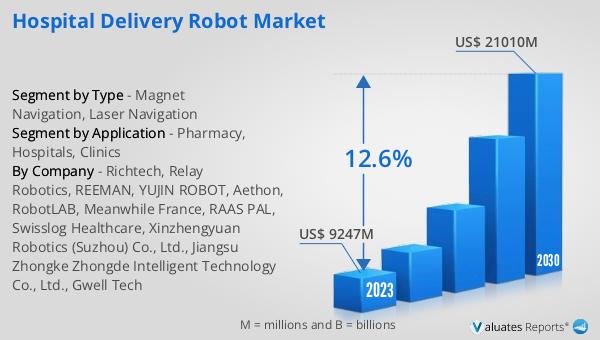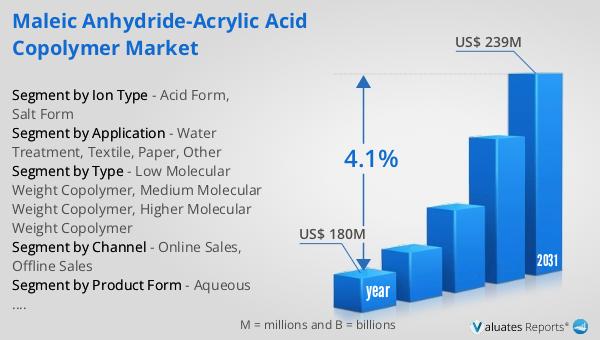What is Global Hospital Delivery Robot Market?
The Global Hospital Delivery Robot Market is a rapidly evolving sector within the healthcare industry, focusing on the development and deployment of robots designed to assist in the delivery of medical supplies, medications, and other essential items within hospital settings. These robots are engineered to navigate complex hospital environments, ensuring timely and efficient delivery of critical resources. The market is driven by the increasing demand for automation in healthcare to enhance operational efficiency, reduce human error, and improve patient care. With advancements in robotics technology, these delivery robots are becoming more sophisticated, featuring capabilities such as autonomous navigation, obstacle avoidance, and real-time tracking. The adoption of hospital delivery robots is also fueled by the growing need to minimize human contact, especially in the wake of the COVID-19 pandemic, to reduce the risk of infections. As hospitals and healthcare facilities continue to seek innovative solutions to streamline their operations, the Global Hospital Delivery Robot Market is poised for significant growth.

Magnet Navigation, Laser Navigation in the Global Hospital Delivery Robot Market:
Magnet navigation and laser navigation are two prominent technologies used in the Global Hospital Delivery Robot Market to enable precise and efficient movement of robots within healthcare facilities. Magnet navigation involves the use of magnetic strips or markers embedded in the floor, which the robots follow to reach their destinations. This method is highly reliable and cost-effective, as it provides a clear and predefined path for the robots to travel. However, it requires the installation of magnetic tracks, which can be a limitation in terms of flexibility and scalability. On the other hand, laser navigation, also known as LiDAR (Light Detection and Ranging), uses laser sensors to create a detailed map of the environment. The robots equipped with laser navigation can detect obstacles, calculate the best routes, and navigate autonomously without the need for physical markers. This technology offers greater flexibility and adaptability, allowing robots to operate in dynamic and complex environments. Laser navigation is particularly beneficial in hospitals where the layout may change frequently, or where there is a need for robots to navigate through crowded or cluttered spaces. Both magnet and laser navigation technologies have their unique advantages and are chosen based on the specific requirements and constraints of the healthcare facility. The integration of these advanced navigation systems in hospital delivery robots enhances their efficiency, reliability, and overall performance, contributing to the growing adoption of robotic solutions in the healthcare sector.
Pharmacy, Hospitals, Clinics in the Global Hospital Delivery Robot Market:
The usage of Global Hospital Delivery Robots in pharmacies, hospitals, and clinics is transforming the way healthcare facilities manage and distribute medical supplies and medications. In pharmacies, these robots are employed to automate the process of picking, packing, and delivering medications to various departments within the hospital. This not only speeds up the delivery process but also reduces the risk of human error, ensuring that patients receive the correct medications promptly. The robots can be programmed to follow specific routes and schedules, ensuring timely delivery of medications to different wards and units. In hospitals, delivery robots are used to transport a wide range of items, including medical supplies, laboratory samples, and patient meals. By automating these tasks, hospitals can free up their staff to focus on more critical patient care activities. The robots are equipped with advanced navigation systems that allow them to move seamlessly through the hospital corridors, avoiding obstacles and ensuring safe delivery of items. In clinics, where the scale of operations may be smaller, delivery robots can still play a crucial role in enhancing efficiency. They can be used to transport medical records, supplies, and equipment between different areas of the clinic, reducing the workload on staff and improving overall workflow. The use of delivery robots in these settings also helps to minimize human contact, which is particularly important in maintaining hygiene and preventing the spread of infections. Overall, the integration of hospital delivery robots in pharmacies, hospitals, and clinics is revolutionizing the healthcare industry by improving efficiency, accuracy, and safety in the delivery of medical supplies and services.
Global Hospital Delivery Robot Market Outlook:
The global Hospital Delivery Robot market was valued at US$ 7653 million in 2023 and is anticipated to reach US$ 18870 million by 2030, witnessing a CAGR of 12.6% during the forecast period 2024-2030. According to our research, the global market for medical devices is estimated at US$ 603 billion in the year 2023 and will be growing at a CAGR of 5% during the next six years. This significant growth in the Hospital Delivery Robot market can be attributed to the increasing demand for automation in healthcare, driven by the need to enhance operational efficiency and reduce human error. The adoption of advanced technologies such as magnet navigation and laser navigation in these robots further boosts their efficiency and reliability, making them an indispensable part of modern healthcare facilities. As hospitals and healthcare providers continue to seek innovative solutions to streamline their operations and improve patient care, the market for hospital delivery robots is expected to witness substantial growth in the coming years.
| Report Metric | Details |
| Report Name | Hospital Delivery Robot Market |
| Accounted market size in 2023 | US$ 7653 million |
| Forecasted market size in 2030 | US$ 18870 million |
| CAGR | 12.6% |
| Base Year | 2023 |
| Forecasted years | 2024 - 2030 |
| Segment by Type |
|
| Segment by Application |
|
| Consumption by Region |
|
| By Company | Savioke, Dispatch, TeleRetail, Marble, Robby Technologies, Amazon Robotics, Boston Dynamics, Robomart, Eliport, Piaggio Fast Forward, Box Bot |
| Forecast units | USD million in value |
| Report coverage | Revenue and volume forecast, company share, competitive landscape, growth factors and trends |
